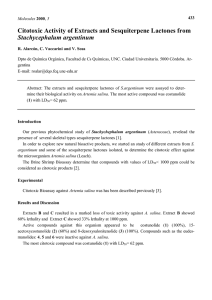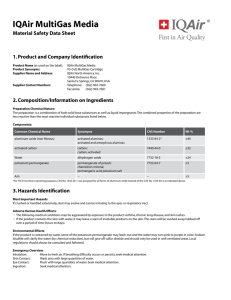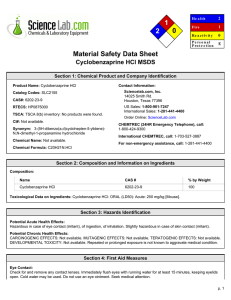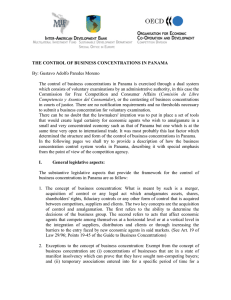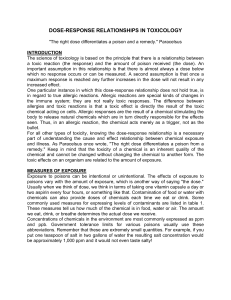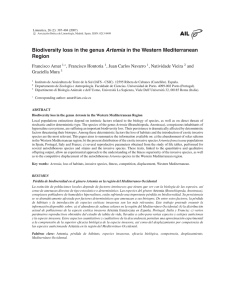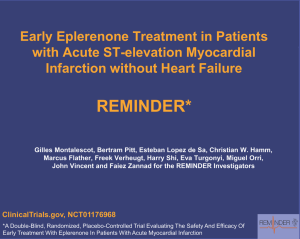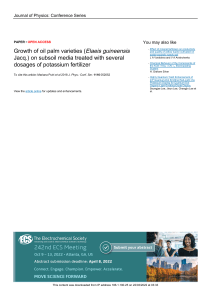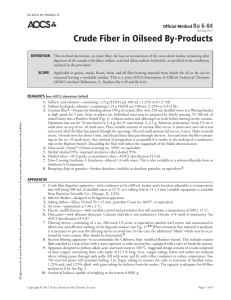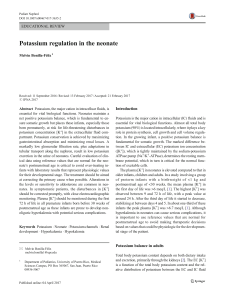Effects of potassium permanganate on artemia salina
Anuncio
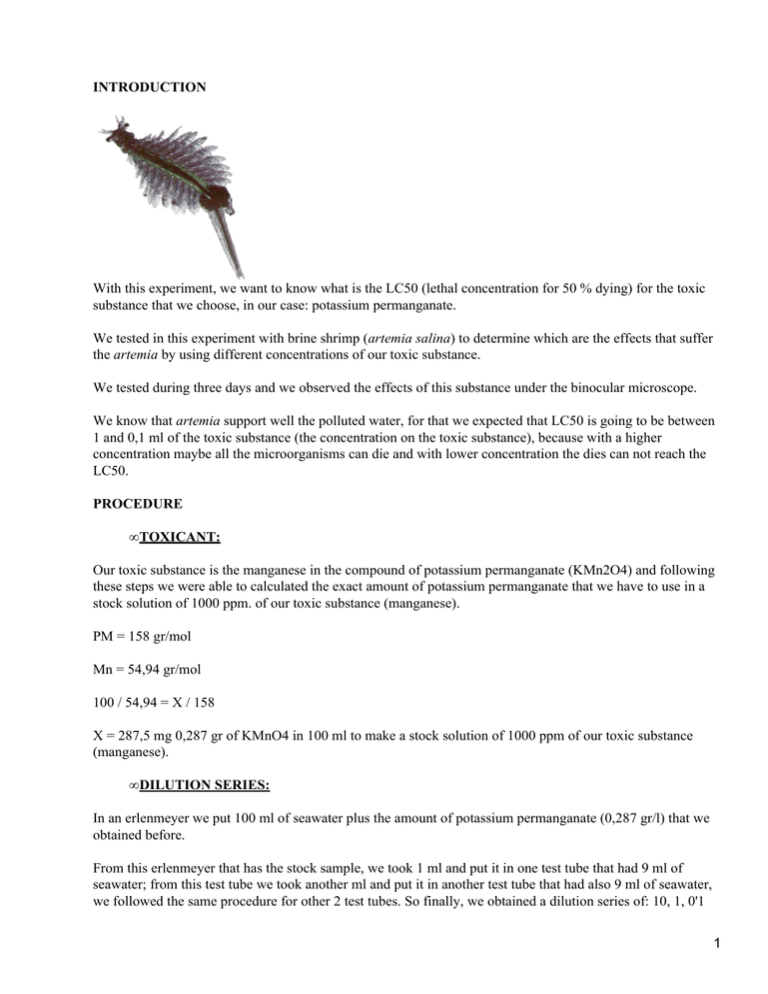
INTRODUCTION With this experiment, we want to know what is the LC50 (lethal concentration for 50 % dying) for the toxic substance that we choose, in our case: potassium permanganate. We tested in this experiment with brine shrimp (artemia salina) to determine which are the effects that suffer the artemia by using different concentrations of our toxic substance. We tested during three days and we observed the effects of this substance under the binocular microscope. We know that artemia support well the polluted water, for that we expected that LC50 is going to be between 1 and 0,1 ml of the toxic substance (the concentration on the toxic substance), because with a higher concentration maybe all the microorganisms can die and with lower concentration the dies can not reach the LC50. PROCEDURE • TOXICANT: Our toxic substance is the manganese in the compound of potassium permanganate (KMn2O4) and following these steps we were able to calculated the exact amount of potassium permanganate that we have to use in a stock solution of 1000 ppm. of our toxic substance (manganese). PM = 158 gr/mol Mn = 54,94 gr/mol 100 / 54,94 = X / 158 X = 287,5 mg 0,287 gr of KMnO4 in 100 ml to make a stock solution of 1000 ppm of our toxic substance (manganese). • DILUTION SERIES: In an erlenmeyer we put 100 ml of seawater plus the amount of potassium permanganate (0,287 gr/l) that we obtained before. From this erlenmeyer that has the stock sample, we took 1 ml and put it in one test tube that had 9 ml of seawater; from this test tube we took another ml and put it in another test tube that had also 9 ml of seawater, we followed the same procedure for other 2 test tubes. So finally, we obtained a dilution series of: 10, 1, 0'1 1 and 0'01ppm. METHOD According to the manual RESULTS • TABLES: Table 1: In this table are showed the relationship between the concentrations and the dies of artemia salina after 24 hours. TABLE 1: CONCENTRATIONS AND DIES (after 24 hours) Concentration Seawater of KMnO4 Test 1 Test 2 Test 3 % Mortality % Mortality after 100 10 1 0.1 0.01 10 10 10 100 8 10 8 86.7 3 6 4 43.3 0 0 0 0 0 0 0 0 0 0 1 3.3 96.7 83.4 40 0 0 0 (Blank) Correction Table 2: In this table are showed the relationship between the concentrations and the dies of artemia salina after 48 hours. TABLE 2: CONCENTRATIONS AND DIES (after 48 hours) Concentration Seawater of KMnO4 Test 1 Test 2 Test 3 % Mortality 100 10 1 0.1 0.01 10 10 10 100 10 10 10 100 5 7 7 63.3 4 4 1 30 0 0 0 0 (Blank) 0 3 2 16.7 Table 3: In this table are showed the relationship between the concentrations and the dies of artemia salina after 72 hours. TABLE 3: CONCENTRATIONS AND DIES (after 72 hours) Concentration 100 10 1 0.1 of Seawater 0.01 (Blank) 2 KMnO4 Test 1 Test 2 Test 3 % Mortality 10 10 10 100 10 10 10 100 9 10 10 96.7 9 9 5 76.7 2 4 3 30 2 5 5 40 • GRAPHS: Graph 1: In this graph are showed the relationship between the concentrations (lg) and percentages (%) in the first day. CONCLUSION The value for the LC50 is situated more and less with a concentration (log) of 0,33 that is a concentration of 3.3 ppm of the toxic substance that in our case is the potassium permanganate. If we have a stock solution of our toxic substance of 1000 ppm and we have put 287 mg of potassium permanganate we can determine how is the amount of potassium permanganate for a concentration of 3.3 ppm. 3.3 * 287 / 1000 = 9.471 mg /l of potassium permanganate. LC50 = 9.471 mg/l DISCUSSION In the lowest concentration of the toxic we do not have too many dies and it could be possible because the artemia used to live in polluted waters and it can support this pollution. With the seawater we have some dies due to the organism do not have enough nutrients or oxygen (these organisms need a lot of oxygen) to develop their metabolism is the right way. In this experiment we only could use the results of the first day because the dying in the blank is larger than 10 % and the result is invalid. 3
